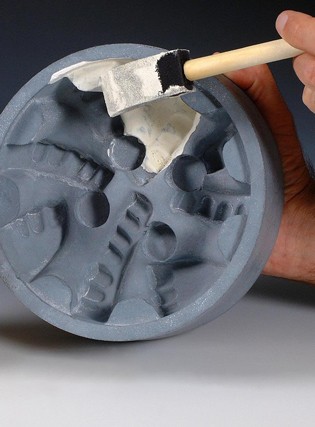They’re also primarily clear to, and resistant to deterioration by uv radiation. The mix of temperature resilient properties and weathering characteristics make these resins and coatings well suited for formula into temperature resistant preservation coatings. Different films can be created with substitute resins that will lower charge per gallon while increasing properties such as for example adhesion, abrasion opposition and treating time.
The pigments applied should be compatible with the resin and shouldn’t decompose at large temperatures. Pigments must also be shade stable over the entire working temperature selection of the coating. Thermally secure pigments keep their shade over time, unlike other pigments on the market and so can be found in warm coatings. Usually, only dark and metal colored temperature stable pigments were available. Now, there is a wide variety of colors, including pigments which will help numerous color corresponding options.
In specifying a warm covering process, the factors affecting efficiency should first be assessed. Along with temperature, these generally include the nature of the substrate, their design, pressure because of thermal cycling, weathering, area planning and application constraints, corrosives and endurance of the coating.Two popular traps are manufactured in specifying: Accepting a single warm covering will undoubtedly be proper for several applications son chiu nhiet.
“Overspecifying” the coating. Also usually, the substrate skin heat is guessed at, and the think is manufactured on the large area for safety. Ergo, the coating system given may be ideal for operating temperatures much higher than these which will be encountered. Also in overspecifying, the level might not dry/cure properly. High Temperature coatings often require recovering at improved temperatures to reach ideal movie properties. A ceiling temperature must be achieved before the covering completely cures/crosslinks or polymerize. With this reaction, a coating rated at (1000F/540C) will not conduct satisfactorily at a heat under (450F-230C). Treating won’t get place and then is really a subject of time and temperature.
Appropriate software and substrate situations are important to writing a specification. Both the heat range and the maximum heat have to be identified. Area thermometers and temperature weapons are now much more advanced today and are the absolute most precise to take heat measurements. Heat numbers taken at probably the most accessible places can be misleading. For example, at ground level, a stack may be greatly range with refractories. It may have epidermis heat significantly below its top reaches wherever the liner could be thinner.
When contact measurements can’t be made, different strategies must be used. One is infared emissivity measurement. An infared check gives accurate temperature profiles of such gear as smelters, boost furnaces, pipelines and kilns. Bunch gas inlet heat could be decided from the procedure get a grip on temperature recorder. After this temperature is famous, the exit gasoline temperature is found for an unlined heap of identified height and diameter.
You will find two broad kinds of temperature films: those for company under (500F-260C) and those for company over (500F-to 1200F-650C). Preparations of those layer techniques change when the heat necessity exceeds these temperatures. Coatings should be formulated designed for the application form and running heat of the substrate to keep up that vast range of heat, amount of coats required and rapid increase in temperature predicated on what’s being painted. In cases where that is an extremely quick heat increase, it is impossible that any finish can work. That is because of the thermal stress due to the huge difference in coefficients of expansion involving the substrate and the coating
Sharp protrusions must be ground down, and welds abraded. Such parts must certanly be spot prepared with a temperature zinc dirt primer. The make-up of the substrate must be regarded, since not all equipment consists of carbon steel. Stainless that is to be insulated must certanly be coated to prevent external caused chloride tension deterioration cracking. That coating program must certanly be chloride free. Any kind of zinc containing finish must be held away from stainless, as a result of welding might bring about dangerous alloying of the steel.
